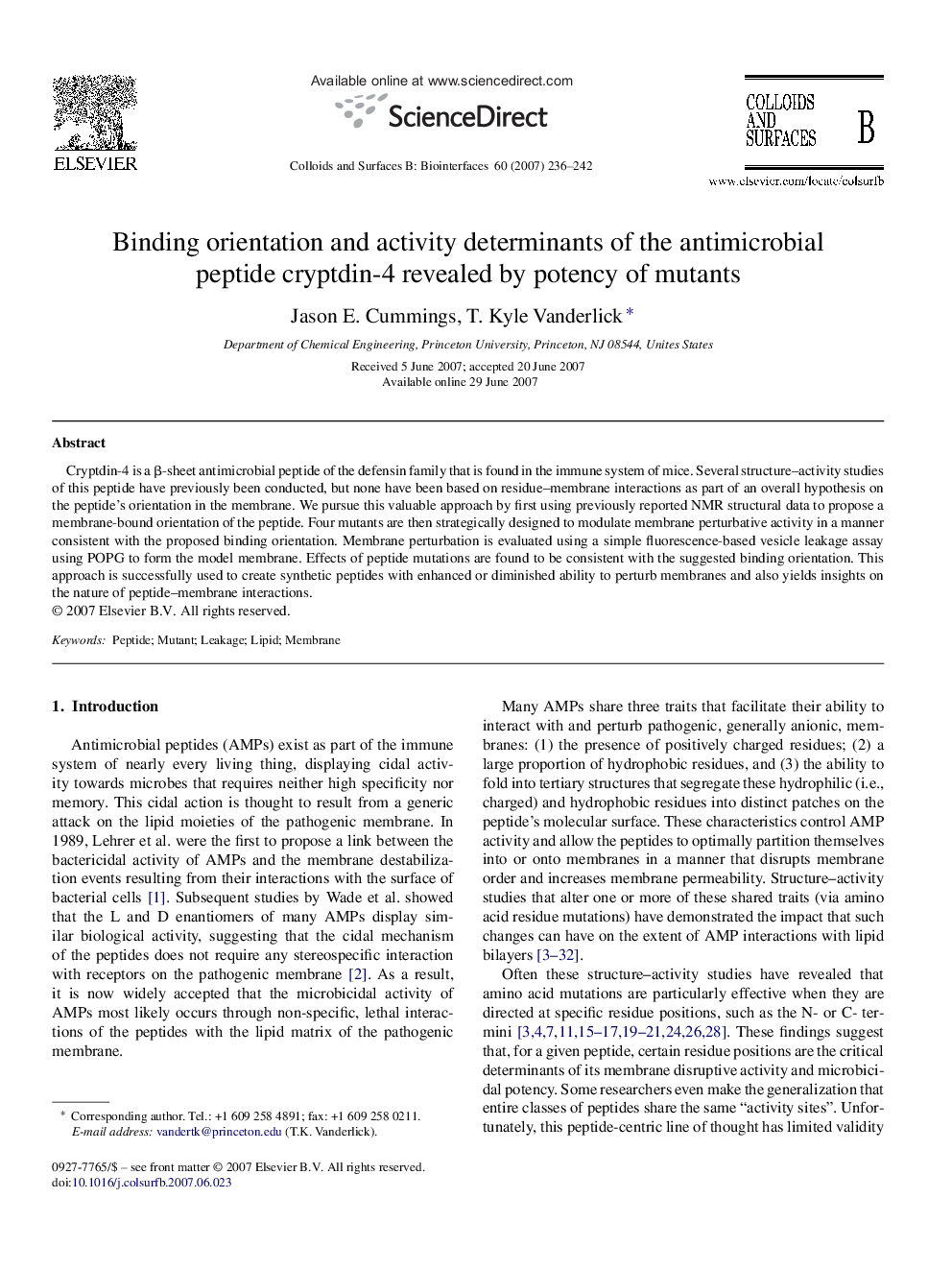| Article ID | Journal | Published Year | Pages | File Type |
|---|---|---|---|---|
| 602614 | Colloids and Surfaces B: Biointerfaces | 2007 | 7 Pages |
Cryptdin-4 is a β-sheet antimicrobial peptide of the defensin family that is found in the immune system of mice. Several structure–activity studies of this peptide have previously been conducted, but none have been based on residue–membrane interactions as part of an overall hypothesis on the peptide's orientation in the membrane. We pursue this valuable approach by first using previously reported NMR structural data to propose a membrane-bound orientation of the peptide. Four mutants are then strategically designed to modulate membrane perturbative activity in a manner consistent with the proposed binding orientation. Membrane perturbation is evaluated using a simple fluorescence-based vesicle leakage assay using POPG to form the model membrane. Effects of peptide mutations are found to be consistent with the suggested binding orientation. This approach is successfully used to create synthetic peptides with enhanced or diminished ability to perturb membranes and also yields insights on the nature of peptide–membrane interactions.
